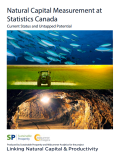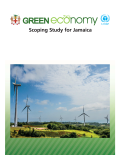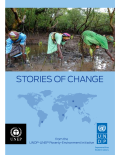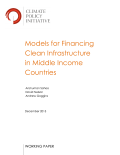
The report Green Economy Scoping Study for Saint Lucia couples an in-depth analysis of Saint Lucia’s agriculture and tourism sectors with a more general review of manufacturing, transport and construction, integrating the key elements of energy, water and waste management.
The study recommends policy reforms that can help speed up the transition to a green economy in Saint Lucia which, like many Small Island Developing States, is disproportionately vulnerable to the impacts of climate change.It also dentifies the most significant challenges for the tourism sector: the high input costs (primarily for energy, water and waste management), competing uses for environmentally sensitive areas accompanied by inadequate land use policies (particularly in coastal areas) as well as the need to diversify Saint Lucian tourism beyond “sun, sea and sand” vacations.



This publication brings together selected Stories of Change which we will hopefully catalyze and motivate governments, stakeholders, and the international development community at large to invest in, and support, poverty-environment mainstreaming across the globe as one element of the transition to an inclusive, green economy. Poverty-environment mainstreaming is a compelling and effective approach and set of tools and capacities for driving the institutional change which can –and ultimately will - deliver sustainable development.
These Stories of Change showcase that innovative and flexible ways of working can be the norm rather than the exception.
The booklet includes the following chapters:

Physical infrastructure, such as energy, transportation, telecommunications, water, and sanitation systems, can contribute to the sustained growth of a national economy. The global economy needs as much as $93 trillion of infrastructure investment through 2030, yet many analysts suggest that global investment is lagging behind the required rate.
This paper looks at the challenges faced by rapidly growing middle income countries in financing their infrastructure, and it focuses on the two seemingly very different models employed by the governments of Brazil and India to overcome those challenges. The paper assesses both the potential benefits and drawbacks of each model and how those potential benefits translate into practice once the particular national circumstances of each country come into play.
